Walk, swim, sail or fly to experience the region’s dramatic landscapes, diverse wildlife and ancient heritage – this is truly the great outdoors and different in every sense.
With more than a million square kilometres of land, pristine coastline and endless blue sky, the Territory is the perfect place to spend some time outdoors. Whether you’re looking for high-adrenaline adventure or just a chance to relax and disconnect from the world, the Territory has you covered.
Nowhere else in Australia – or the world – will you find such varied landscapes, fresh air, pristine surroundings and unique experiences.
On the water adventures
One of the best ways to experience the Territory is on the water. Across the Top End there are dozens of cruises showcasing wildlife, sunsets, Territory cuisine and special events.
For a relaxing tour around Darwin Harbour, there are plenty of cruises available. Enjoy a daytime or evening cruise with City of Darwin Cruises, a Daytime Sightseeing Cruise, a Champagne Sunset Sail, a Cape Adieu Sunset Dinner Cruise, a Sea Darwin Harbour Highlights cruise or even a Sunset Fish’n Chips by Sea Darwin cruise. If military history interests you, Sea Darwin also offers a Bombing of Darwin historical cruise of iconic wartime sites as well.
On certain dates determined by the lunar cycle, the Turtle Tracks tour visits one of the key Australian nesting grounds for Flatback and Olive Ridley turtles. The fast boat ride from Darwin will blow out the cobwebs, as you pass historic Charles Point and into Bynoe Harbour, to the remote Bare Sand Island. Dinner and drinks are included, with a portion of the price donated to help protect the endangered Olive Ridley and Flatback turtles. As the sun descends, qualified guides share knowledge of the unique war history of the island, their insights into the life of the turtles and traditional stories from the Larrakia People. After sunset the guided walk provides the unique opportunity to view the turtles laying their eggs. Participants late in the season may even witness the marvel of hatchlings emerging from under the warm sand.
For a little less cruising and a little more adventure, check out 00Seven Jet Ski Adventures, Darwin Adventure Boat Tours, experience a Mary River Wetlands – Airboat Safari or with Matt Wright, Explore the Wild take a Heli-fishing and airboat adventure.
At Adelaide River is the Spectacular Jumping Crocodile Cruise. Make your own way down the Stuart Highway, or join a tour that includes bus transfers to and from the cruise site. Get your camera ready to capture the spectacle.
In the stunning Nitmiluk Gorge (Katherine) a range of on-the-water tours are available, including a Dawn Tour to see the surroundings spring to life as the sun rises, the NitNit Dreaming 2 Gorge Tour, or the Timeless Land 3 Gorge Tour operating throughout the day, or the Nabilil Dreaming Sunset Dinner Tour – a candlelit dinner of local produce cooked on board.
In Kakadu, cruise the famous Yellow Water billabong. Any time, from sunrise through to sunset gives you a front row seat to the crocodiles, birds and fish that make the billabong their home. Take a 1.5 hour cruise or a 2 hour cruise to experience this incredible habitat. Also in the park close to Cahills Crossing, the Guluyambi Cultural Cruise shares the wonder of the East Alligator River in a fully authentic cultural experience.
Of course, if you are going out on the water anywhere in the Top End, always be Crocwise and take notice of all warning signs.
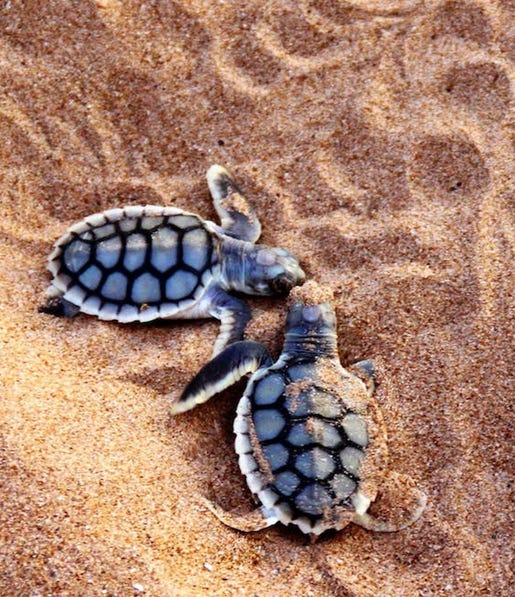
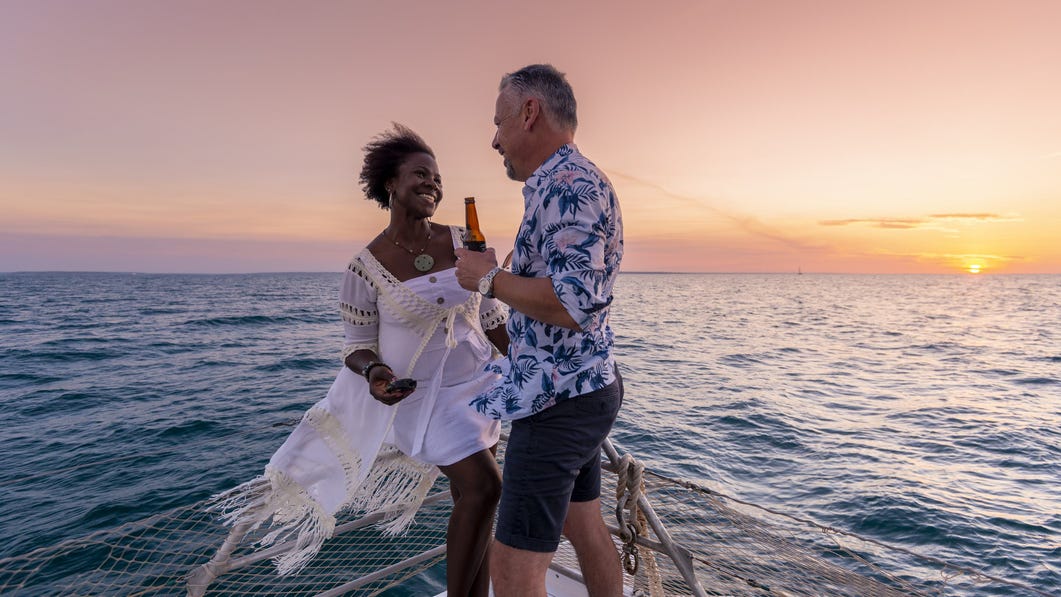
Swimming
The Territory abounds with amazing spots to swim.
Across Darwin, swimming is available year-round at the Darwin Waterfront at either the Recreation Lagoon or the Wave Lagoon. There’s also Lake Alexander at East Point Reserve, the Palmerston Water Park and the Leanyer Recreation Park – where you can swim, use the water slides or enjoy the water play area with the kids.
During the dry season from May to October, some beaches are patrolled by lifesavers for ocean swimming. Beaches are patrolled at certain times and may be closed if there are croc sightings, stingers (box jellyfish), or other hazards present. Check out the patrol times for Casuarina, Nightcliff, East Point and Mindil beaches. If you’re going into the water, always be Crocwise and take notice of all warning signs.
Berry Springs Nature Park is a great spot for a swim during the dry season only. The shady pools along Berry Creek are easy to access and perfect for snorkelling. There’s picnic facilities on site along with BBQs and a kiosk. If you’d like to make a day of it, right next door is the Territory Wildlife Park.
Litchfield National Park is another popular destination for swimming. Just an hour out of Darwin, Litchfield has easily accessible options including Wangi Falls, Buley Rockhole, and Florence Falls. Those with four-wheel drive access can experience the lesser-known Tjaynera Falls (Sandy Creek). You can camp at or near most spots with swimming open during the dry season. Florence Falls is open year-round with Buley Rockhole open most of the year.
In the Katherine region, the best spots for a swim are the Mataranka Thermal Pool, Bitter Springs, Katherine Hot Springs, Leliyn (Edith Falls) and Nitmiluk National Park.
Kakadu National Park offers some incredible seasonal swimming spots, including the popular Jim Jim Falls plunge pool, Twin Falls, Motor Car Falls and the lesser known Maguk falls and plunge pool. Jarrangbarnmi Gorge (Koolpin) waterfall and plunge pool is another hidden gem, only accessible by hiking track. With any of the waterfalls in Kakadu, before you travel there be sure to check the destination’s accessibility status through Waterfalls/Kakadu National Park on the Parks Australia website. Always be Crocwise too and take notice of all warning signs.
In Central Australia, close to Tennant Creek Tingkkarli/Lake Mary Ann is great spot for a refreshing dip. West of Alice Springs in the Tjoritja/West MacDonnell Ranges are Ellery Creek Big Hole, Glen Helen Gorge and Redbank Gorge (Rwetyepme). The water gets cold in these spots, even in the heat of summer – so flotation devices are recommended for comfort and safety to enhance your enjoyment.
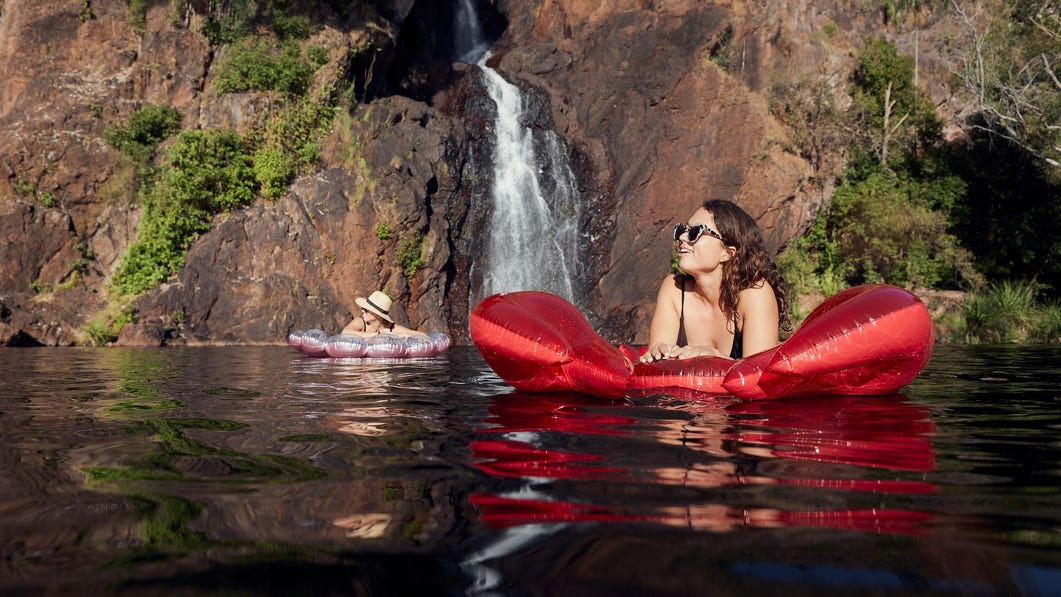
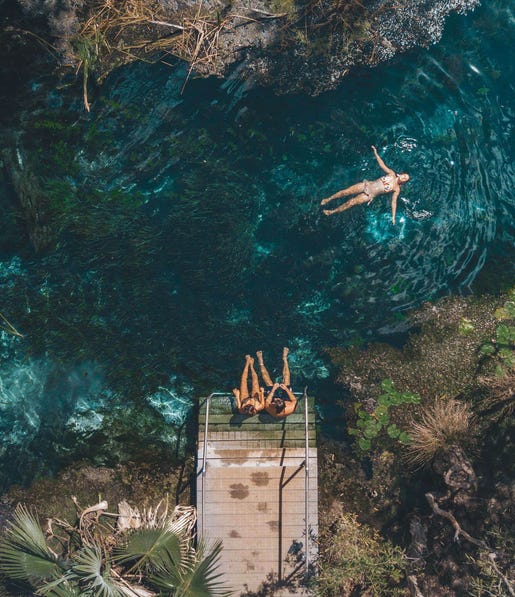
Canoeing & kayaking
Canoeing and kayaking are popular in the Top End, particularly in the dry season where waterways more accessible. Of course, if you are going on the water, be Crocwise and take notice of all warning signs.
The best spots for canoeing and kayaking in and around Darwin are Lake Alexander (open all year round), the Darwin Waterfront Recreation Lagoon (open all year round), Manton Dam (open most of the year) and Lake Bennett (open all year round to guests of the resort). These are all man-made waterways that are easily accessible and great for a paddle.
Heading down the track, Nitmiluk National Park in the dry season is ideal for a canoe with hire crafts available for half-day, full-day or overnight adventures from Nitmiluk Tours. Katherine River is also a great option, best enjoyed through a Gecko Canoeing and Trekking guided tour.
In Tennant Creek, Tingkkarli/Lake Mary Ann is an oasis in the desert. It’s perfect for a paddle and a picnic. Outside of Alice Springs in the Tjoritja/West MacDonnell Ranges, Glen Helen Gorge, Redbank Gorge (Rwetyepme – pronounced ‘roo-chip-ma’) and Ormiston Gorge are all suitable for kayaking dependent on water levels. You’ll need your own craft though for these spots.
Fishing
For residents of the Top End, fishing fishing comes with the Territory. Darwin sits right on the Arafura Sea and with a number of wrecks and artificial reefs in proximity, there are plenty of spots to go deep ocean fishing and reef fishing. You can also try your luck fishing from the beach, or from one of the wharves or jetties. If you want to target a barramundi, you can book a fishing tour or launch a suitable vessel from one of the many Top End boat ramps into the rivers and estuaries in search of the famous Territory icon.
Whilst many Territorians have their favourite fishing places they prefer to keep to themselves, most of these secret spots are in fact in popular locations featured in our regional guides:
These guides will fill you in on what you can catch and when, as well as giving you links to the dozens of guided fishing charters offered across the Top End from half-day harbour charters to multi-day trips based from a Mothership.
If you’re lucky you might even catch a Million Dollar Barra, so make sure you register beforehand to be in the running.
Before fishing, be sure to check out the free Northern Territory Fishing & Boating Mate app to keep on top of bag limits and restricted fishing zones.
Of course, anytime you are going out on the water in the Top End, always be Crocwise and take notice of all warning signs.
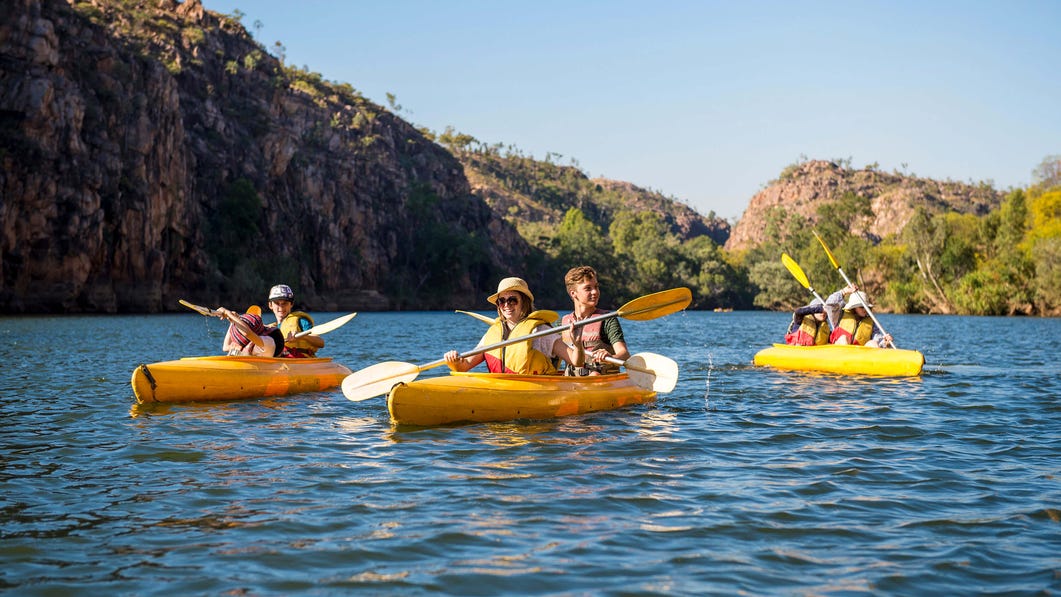

Wildlife spotting
The Territory is home to unique and fascinating wildlife, with plenty of opportunities to observe animals both in the wild and in wildlife parks.
For a close encounter with marine life, Aquascene fish feeding is a fun, family-friendly interactive experience. From a purpose-built fish feeding platform, you can wade into the water of the Darwin Harbour. Based on the tide times, you can hand feed a range of local fish species. It’s fun for everyone and a great chance for a quick cool-off in the process.
For an experience to remember in Alice Springs, join a sunset camel ride. See the sunset from a new vantage point and learn all about the humble camel’s history as a transport provider for early colonial settlers and Afghan traders.
The many nature reserves, botanic gardens and National Parks throughout the NT provide amazing opportunities for bird watching, particularly near waterways and hidden rockpools. In Darwin, East Point Reserve, Casuarina Coastal Reserve and the George Brown Botanic Gardens are local favourites. Just an hour East of Darwin along the Arnhem Highway is Fogg Dam Conservation Reserve, one of the few wetland systems that is accessible year-round. Yellow Water Billabong in Kakadu contains hundreds of species of migratory birds making themselves at home in the wetlands. In Central Australia, there’s the Olive Pink Botanic Gardens in Alice Springs and you can’t beat the East MacDonnell Ranges and the Tjoritja/West MacDonnell Ranges for spotting birds.
Outstanding wildlife displays can be found at both the Territory Wildlife Park just outside of Darwin and the Alice Springs Desert Park. These are dedicated wildlife centres focusing on biodiversity and habitat protection.
At the Territory Wildlife Park a range of impressive attractions await, including a nocturnal house, a walk-through aviary, an amazing aquarium and a dingo enclosure to name a few. There are presentations and shows throughout the day, with the Flight Deck birds of prey show a popular favourite (weather permitting). Shuttle trains operate at intervals throughout the day providing transport between attractions. You can hop on and off to enjoy the ride, or stroll through the park at your own pace to take in the surrounds.
The Alice Springs Desert Park is dedicated to the different habitats of the desert. It’s home to an array of animals and offers displays of nocturnal and desert animals that are rarely seen. It’s also home to the Alice Springs branch of the NT Herbarium, housing more than 270,000 preserved plant specimens and showcasing an amazing range of native plants from across the distinct sand country, woodland and desert rivers zones. You can take your time wandering around the park, see one of the shows and learn about Aboriginal bush tucker and bush medicine.
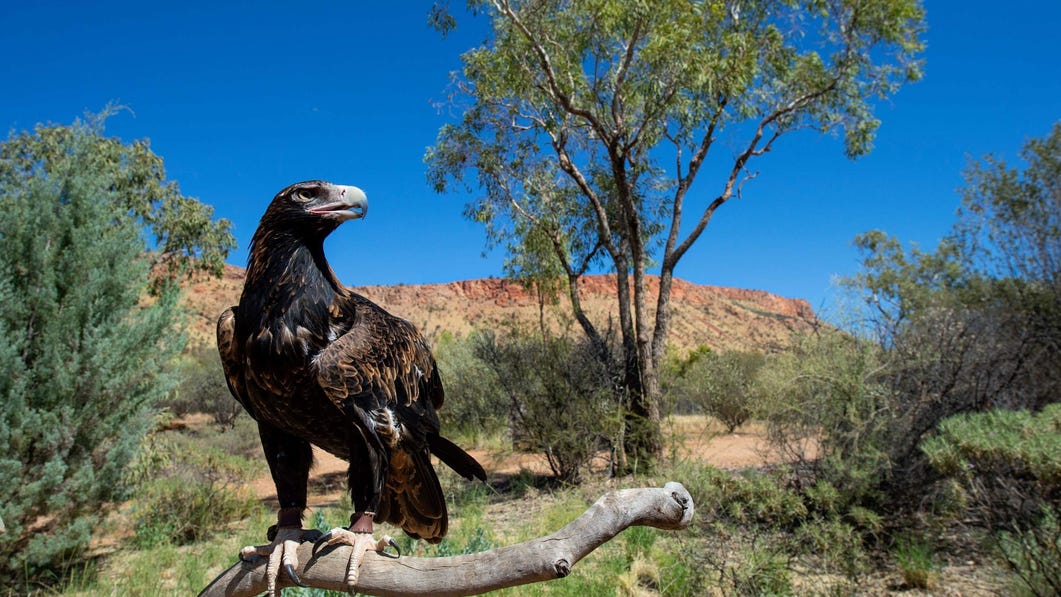
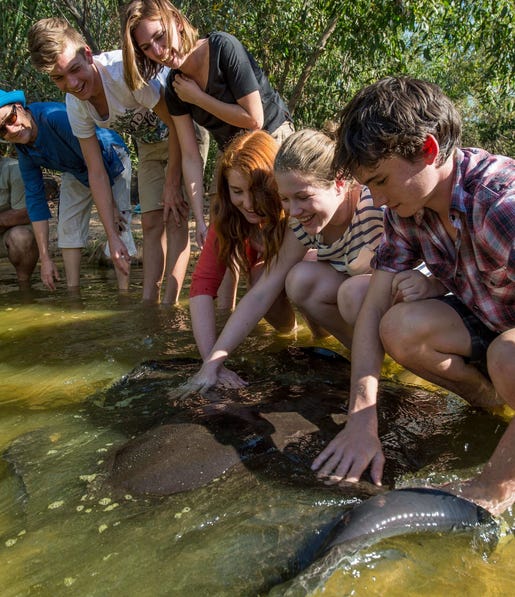
Hiking & walking
One of the simplest and most satisfying things to do in the Territory is to take a walk.
There are short self-guided historic walks in each major Territory town, including Top End walks steeped in the WWII history of the area.
The Darwin Street Art Festival showcases incredible street art created by nationally and internationally renowned artists on buildings, carparks and power boxes in the Darwin CBD.
Close to the city you can find accessible nature walks in the Botanic Gardens, East Point Reserve and Casuarina Coastal Reserve.
For experienced walkers, long-distance hiking trails like the Jatbula Trail in the Katherine region, Tabletop Track in Litchfield National Park and the Larapinta Trail in Central Australia are as challenging as they are rewarding. These are no ‘walk in the park’ though and are considered by many as being bucket list worthy. Make sure you book your spot and are well-prepared, or the enlist the aid of a guided walking service.
In Alice Springs, you can stroll through the town centre, walk along the dry bed of the Todd River or visit the Telegraph Station and learn about the overland telegraph – the first connection allowing 24 hour a day communication with the rest of the world.
Further out of Alice Springs, you can enter the Tjoritja/West MacDonnell Ranges and wander around the Ochre Pits, Standley Chasm (Angkerle Atwatye) and Ormiston Gorge. If you keep travelling west, you’ll reach Uluru and Kings Canyon – both with breathtaking walks. If you’re looking for a unique way to see Uluru, there’s the Uluru Sunrise & Segway tour and Uluru/Ayers Rock Harley Tours.
Camping
A favourite pastime of many Territorians is camping. It’s a chance to get away from the repetition of modern life, switch off the personal devices and embrace nature.
Many popular campsites are accessible by road and have public facilities like toilets, BBQs and fire pits. Wherever reservations are available it’s important to book ahead to avoid disappointment – but not all campsites can be reserved. Some are allocated on a first-come first-served basis, so be sure to research the campsite you want beforehand.
The following camping location guides can help you find the best spots, show you the facilities available there, direct you how to get there, confirm whether you need a permit and any cost involved.
- Camping around Darwin (including Litchfield and Kakadu)
- Camping around Katherine
- Camping around Tennant Creek
- Camping around Alice Springs
- Camping near Uluru
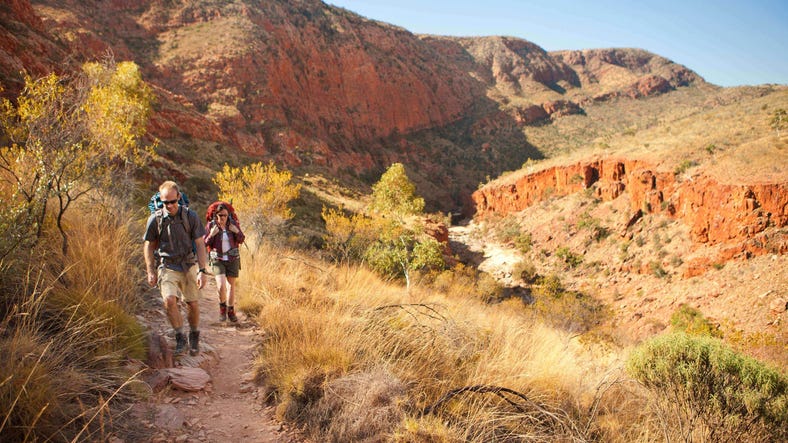
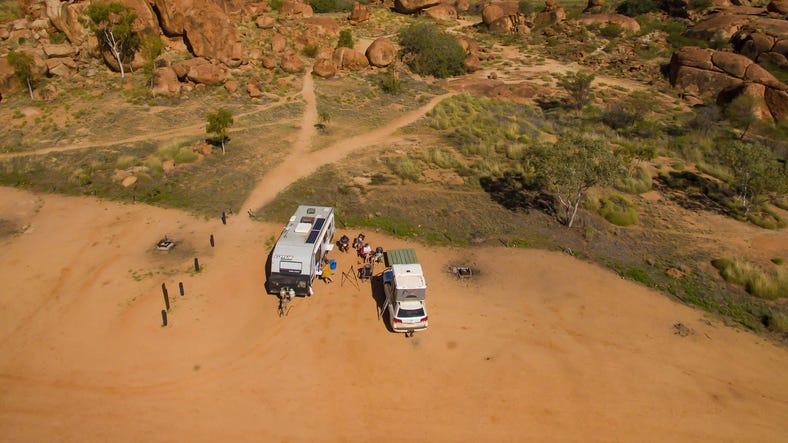
Watching the sky
The Territory is famous for its incredible sunsets, with stunning colours filling the sky. From almost anywhere you can stop, take a breath and relax as the sun retires.
The best ways to experience the sunset in Darwin is from one of the many beaches. During the dry season, watch the sun set at the Mindil Beach Sunset Market operating on Thursdays and Sundays. Pack a picnic, or grab a tasty treat from one of the many market vendors and enjoy the sea breeze. The Darwin Trailer Boat Club, Darwin Sailing Club and Darwin Ski Club Inc are also great spots to grab a drink, a bite to eat and watch the sun go down.
Down the track, head to Kakadu National park and enjoy a sunset view from Ubirr. It’s an hours’ walk from the carpark and moderately steep to the lookout, but well worth the effort. Check out the rock art galleries on your way up.
If you’re in Tennant Creek there’s the Bill Allen Lookout or, an hour down the track towards Alice Springs at Karlu Karlu/Devils Marbles, a stunning sunset awaits. In Alice Springs itself, the best spot for sunset in town is Anzac Hill. You’ll be greeted by a 360° view of the town and the surrounding country. Drive up to the carpark or take the rugged walking track to the top. Once the sun has descended, just outside Alice Springs is Earth Sanctuary World Nature Centre. Public and private Night Sky Astronomy sessions are open to all ages. Using deep sky telescopes and laser pointers, see the night sky in a whole new light.
If you’re visiting Uluru, viewing this spectacular attraction at both dawn and dusk are unforgettable experiences. The suggested sunrise and sunset viewing areas are ideally located to give you the best view of the monolith as it changes colours. Uluru also boasts an astronomy tour for the family with the Family Astro Tour. Leaving 40 minutes after sunset, your expert guide will show you amazing things to see in the sky and explain their significance to Aboriginal culture.
From the air
If you’re seeking different views of the Territory’s landscapes, a scenic flight in a light plane, helicopter or hot air balloon provides a unique perspective of the countryside and an added appreciation of just how big the outback is.
Scenic flights are available in each of the major centres and at some of the most popular tourist attractions. Our scenic flights guide will tell you everything you need to know to get a bird’s eye of the surroundings.
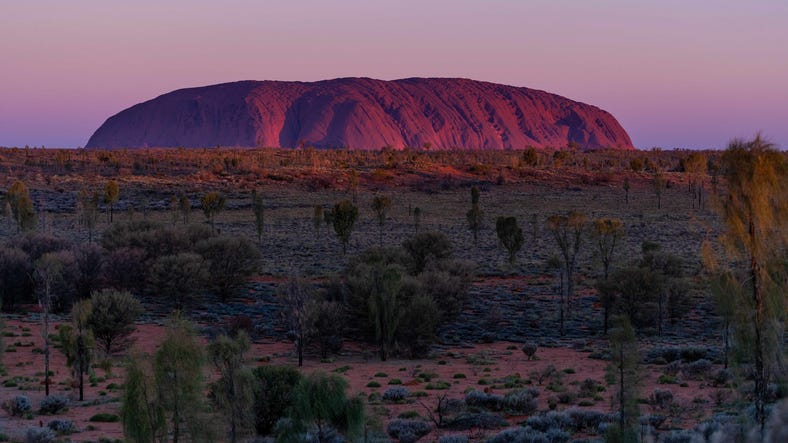

Safety information & advice
In order to make the most of your NT experience, here are some helpful tips to keep you safe and sound as you enjoy your outdoor activities.
Road safety
Road safety is always important, but travelling on Territory roads at night time or early in the morning can be especially challenging. Both dawn and dusk are times of high activity for animals like kangaroos, cattle, camels, horses and birds of prey. They can appear on or beside the road suddenly and without warning , so please always remain vigilant and drive carefully.
Mosquitoes & midges
Dawn and Dusk are also high activity times for mosquitoes and midges – especially anywhere near bodies of water. Use insect repellents and cover up with long, loose-fitting and preferably light-coloured clothing to protect yourself against being bitten.
Sun & heat
In the Territory, it can get very hot the direct sun. Even outside of the summer months in the Red Centre and during the dry season in the Top End, the sun can have an adverse effect before you even realise it. Make sure you Slip, Slop, Slap, Seek, Slide to protect yourself and always carry plenty of water. The recommendation is 1L per person per hour minimum, to prevent dehydration and sunstroke.
Stay warm
The desert gets cold in the Autumn and Winter months of April to September. If you’re in Central Australia or the Barkly region at these times of the year, make sure you have warm clothes at hand before heading out to watch the sunset. The temperature can drop rapidly and often gets below zero °C at night.
Be Crocwise
Anytime you are going in, out on, or nearby the water in the Top End, always be Crocwise and take notice of all warning signs.
Explore with care
When exploring your surroundings be mindful that we have a duty to respect the cultural significance of the land and to protect and conserve the flora and fauna it houses. Do not disturb or feed the animals, or unnecessarily impact on the vegetation of these unique and remarkable habitats.
.jpg?width=48&height=20&fit=crop&auto=webp&quality=80)










.jpg?width=48&height=20&fit=crop&format=jpg&quality=80&auto=webp)









.jpg?width=48&height=20&fit=crop&format=jpg&quality=80&auto=webp)
